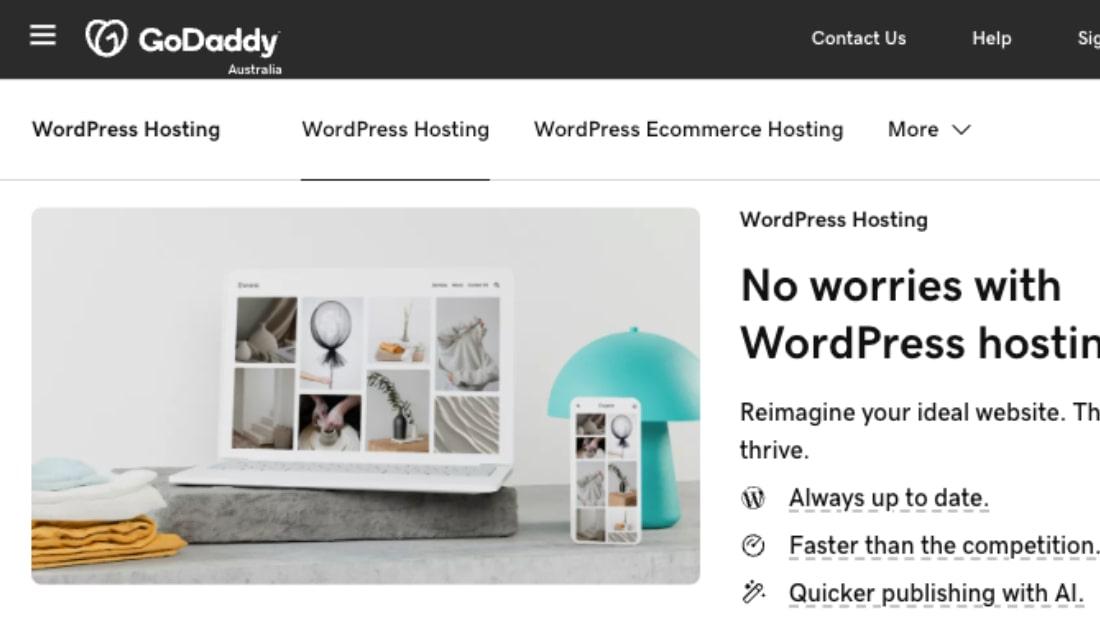Coming up with blog topics is exciting in the beginning. But after the first few blog posts, the creative inspiration can start to fade. Even the most inventive blogger struggles to continuously come up with new blog post ideas.
Luckily, there are some blog post ideas that are always going to interest and attract readers.
Editor’s note: If you have a WordPress blog but are tired of all the upkeep, switch to Managed WordPress from GoDaddy, the world’s No. 1 web host. You’ll spend less time applying updates and security patches and more time blogging.
The place to start is with their questions
Your target customer has a lot of questions and writing blog posts is a brilliant way to answer them.
The longer format of a blog gives you plenty of space to answer completely — even offer pro tips and advice.
Make sure you answer only one question per post if the question needs a detailed explanation and take the time to cover all the aspects of the subject.
The questions your customers have will vary from business to business, but these top seven will get you started.

Photo: Camylla Battani on Unsplash
1. Which product/service is best for me?
Your customer has a problem — a leaky faucet, for example, or ill-fitting shoes — and wants to know which product or service can solve that problem. Naturally, they go online and type in their problem.
“Best” blog posts often get attention because that’s exactly what people are typing into Google:
- Best computers for students
- Best way to respond after a first date
- Best plumbers in Paddington
Compiling a list of the top options in your category makes it easy for potential customers to see which brands are worth buying from, including your own.
This tactic builds credibility for your business, as you’re not just flaunting your own product or service as the only decent choice. Rather than coming across biased and ranking your brand as No. 1, you leave it unranked and benchmark fairly.
Be willing to describe the situations in which your product or service would not be suitable. Perhaps your construction company only handles remodels. So you would not be a good match for a customer looking for a new build. Readers will appreciate your honesty.
2. What are the costs involved?
For trade businesses, this is a great question to answer. Because the amount of work and materials involved in every job is different, you know you can’t provide a price list on your website.
Include an approximate hourly rate for labour, tell them the different costs for materials and provide examples.
It’s a good idea to add in a minimum project rate, that way if their budget is $1,500 and your rates start from $2,000, they know you’re not the right fit for them. It also saves you time because you don’t have to quote for projects you’re never going to win.
3. What to expect when working with you
From graphic designers to health coaches, your clients all want to know what it’s like to work with you. They want to know what to expect at each step, so creating a blog post about your process can alleviate their worry and prompt them to schedule an appointment.
4. Don’t DIY — why your expertise is a better choice
With YouTube tutorials inspiring everyone to have a go at new hobbies or learn to make repairs, you need to help them understand why DIY isn’t always a great idea for the product or service you provide.
Again, people expect you to be the expert. Explain when DIY is okay and when it’s not.
It’s tempting to exaggerate the awesomeness of what you offer but it’s not necessary (and will do more damage than good). Just talk them through each feature of your product or service and describe the situations when using it outweighs the time and energy it would take for them to DIY.

5. Is this all I need?
There’s nothing worse than making a purchase, excitedly rushing home to use it and discovering you haven’t bought a crucial part to make it work. This topic is your chance to let them know any extras they need to buy to avoid post-purchase disappointment.
6. What’s the quality like? How do you ensure it?
It’s not enough to say “our gym bag is the best because we think so.” You need to explain how you source your material from the best supplier in the country. And you make sure it’s stitched with heavy-duty thread to make it last. Go into as much detail as possible to show how your product is top notch, including closeup photos that show the minute product details that make yours better.
Explain your return or exchange policies clearly so people who are considering a purchase know whether they can change their minds after buying it.
If you have product reviews from actual customers, feature them prominently in your post. Nothing sells a product or service like positive customer reviews.
7. How do I use it?
We all know we need to vacuum our floors. Some customers will head to a store to test a few out and let the sales rep show them how to use the one they decide to buy.
Create a step-by-step guide on how to use your product to take them through how it works. This blog post could also include:
- One or more videos showing how it works
- Pro tips that might not occur to the new user
- Simple solutions to common usage/fit issues
Don’t forget to include keywords in each post
People aren’t the only ones reading your blog post, Google is too. If you want any chance of the world’s most popular search engine ranking your blog post on the first page of the search results, you need to include keywords in your post.
Keyword research is a great way to come up with new blog post ideas, as it tells you what topics related to your business people are searching for.
So how do you go about choosing keywords relevant to your products or services? Think about the words your prospective customers are likely to use when they search for your product or service. Then read this article on making Google work for you — it takes you through the three basic steps of keyword SEO.

BONUS tip: The most popular blog topic is the how-to
When a customer buys a bike, they want to know how to look after it. Write a post about how often they need to get it serviced, how to check if the tyres need more air and how to clean it.
Before they purchase a set of blinds, people generally want to know how to measure their window to choose the right size.
If you’re selling painting supplies, create a blog post on how to clean up their brushes and another for how to create different brush strokes.
Selling slow cookers? Write a post on how to make lasagne in it.
Use these blog post ideas to get you started on addressing blog topics that will keep drawing readers in every time.






